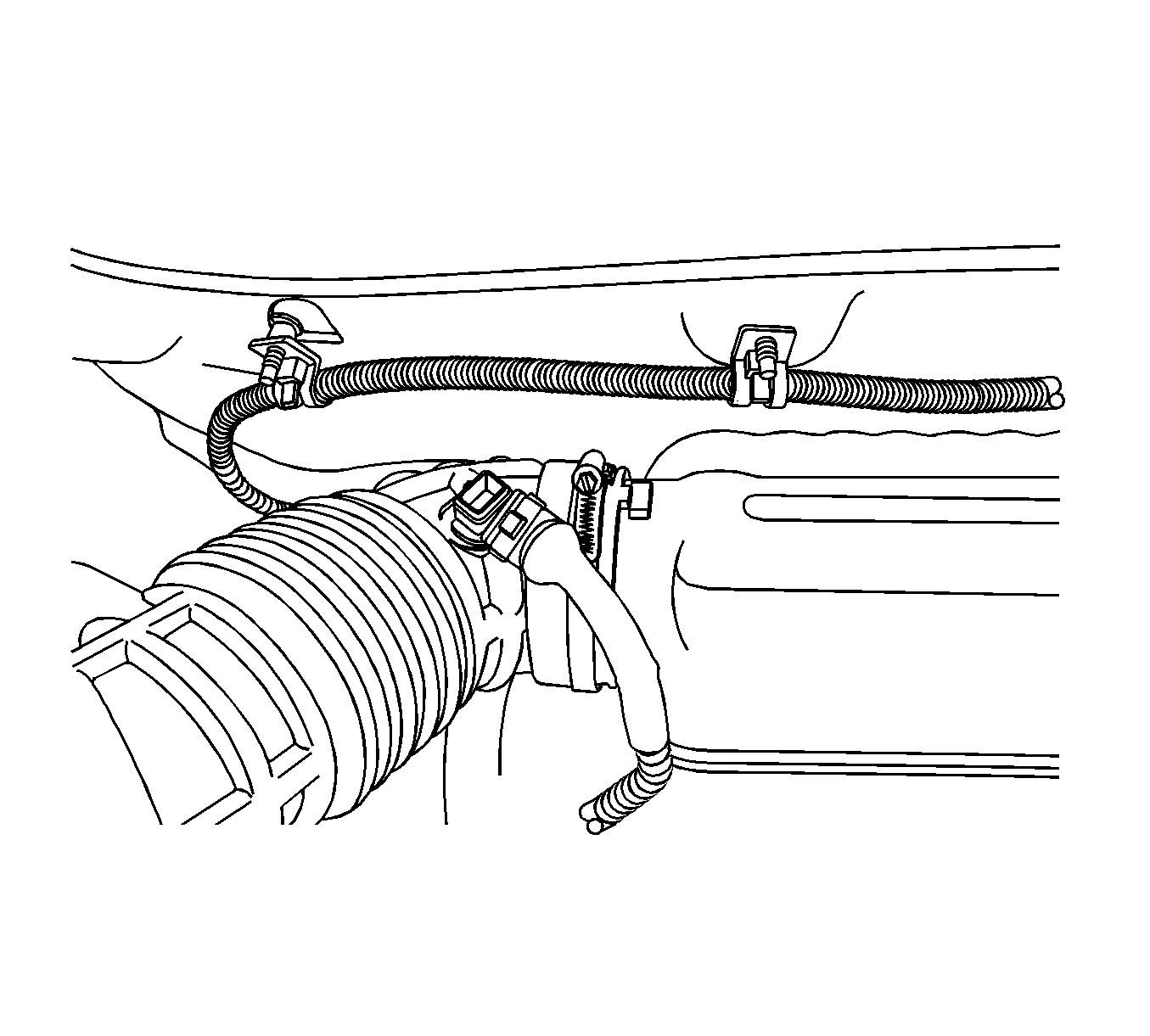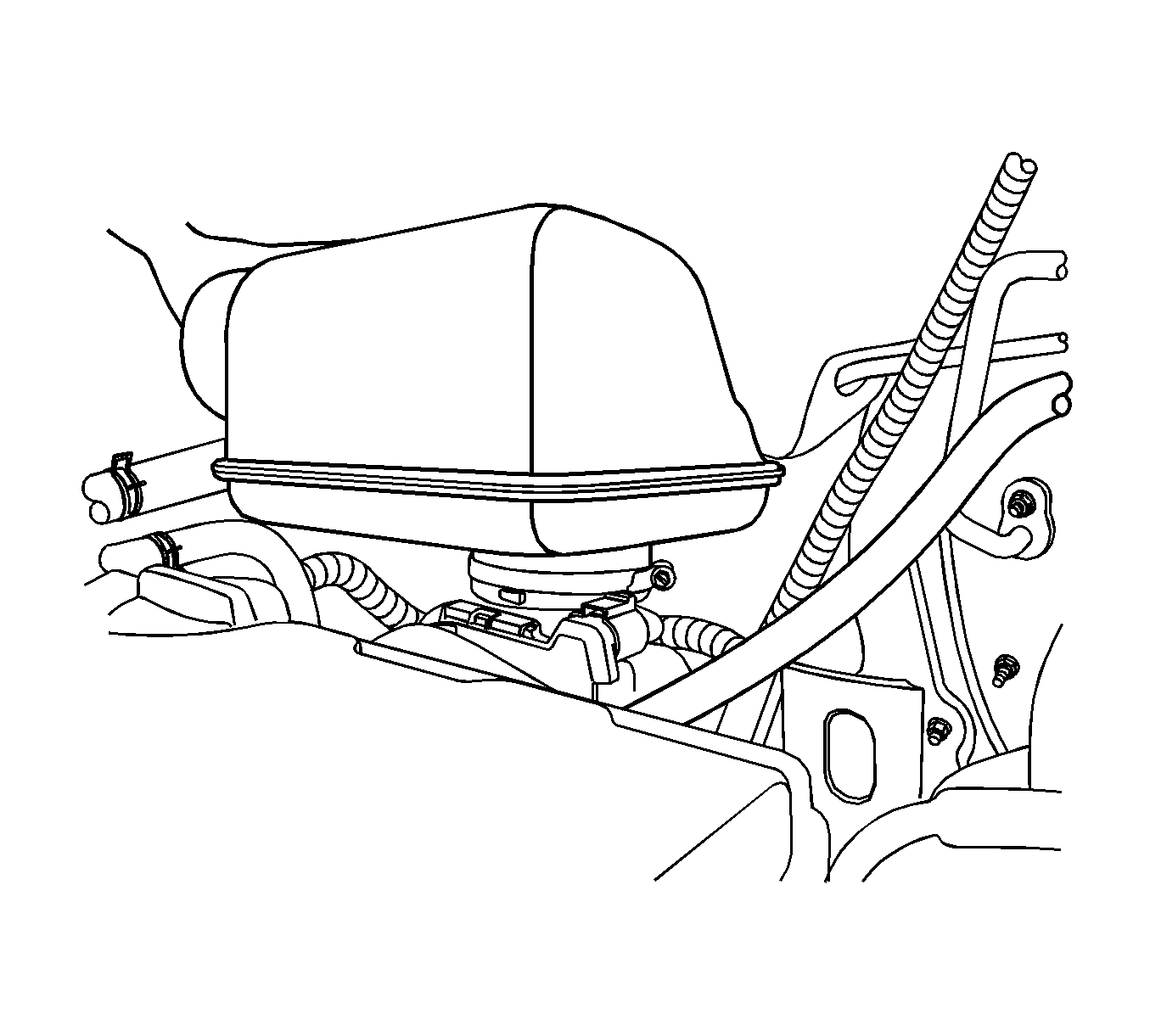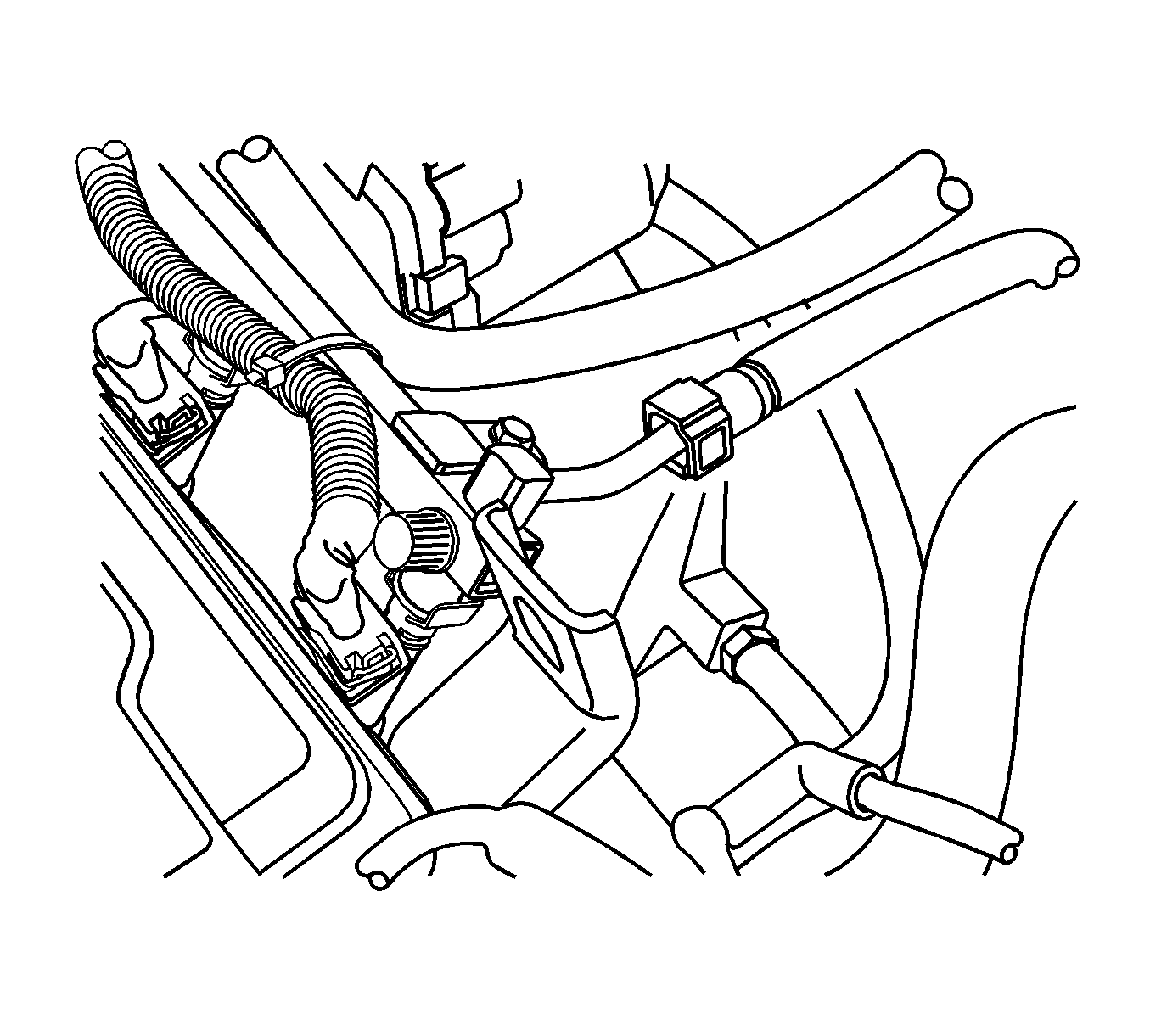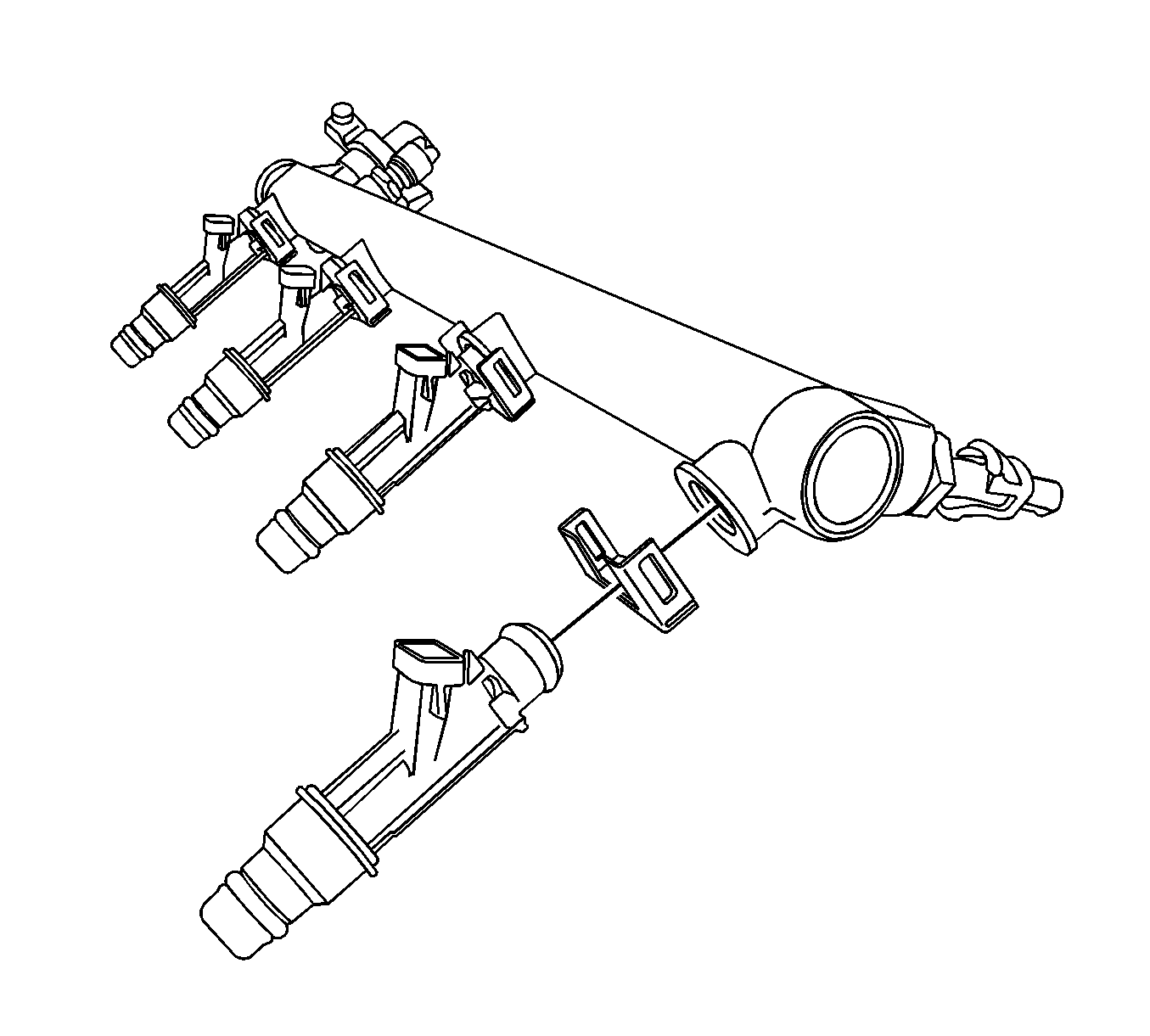Removal Procedure
- Relieve the fuel system pressure. Refer to Fuel Pressure Relief .
- Disconnect the negative battery cable.
- Disconnect the intake air temperature (IAT) sensor connector.
- Loosen the clamp and disconnect the air cleaner outlet hose from the resonator.
- Loosen the clamp and remove the resonator from the electronic throttle body.
- Remove the engine cover.
- Disconnect the breather hose and PCV hose from the cylinder head cover.
- Disconnect the fuel feed line at the fuel rail.
- Connect the fuel injector connectors.
- Remove the fuel rail retaining bolts.
- Remove the fuel rail with the injectors attached.
- Remove the fuel injector retainer clips.
- Remove the fuel injectors by pulling them down and out.
- Discard the fuel injector O-rings.

Caution: Remove the fuel tank cap and relieve the fuel system pressure before servicing the fuel system in order to reduce the risk of personal injury. After you relieve the fuel system pressure, a small amount of fuel may be released when servicing the fuel lines, the fuel injection pump, or the connections. In order to reduce the risk of personal injury, cover the fuel system components with a shop towel before disconnection. This will catch any fuel that may leak out. Place the towel in an approved container when the disconnection is complete.
Caution: Gasoline or gasoline vapors are highly flammable. A fire could occur if an ignition source is present. Never drain or store gasoline or diesel fuel in an open container, due to the possibility of fire or explosion. Have a dry chemical (Class B) fire extinguisher nearby.
Caution: Refer to Battery Disconnect Caution in the Preface section.



Notice:
• Use care when servicing the fuel system components, especially
the fuel injector electrical connectors, the fuel injector tips, and
the injector O-rings. Plug the inlet and the outlet ports of the fuel rail
in order to prevent contamination. • Do not use compressed air to clean the fuel rail assembly as this
may damage the fuel rail components. • Do not immerse the fuel rail assembly in a solvent bath in order
to prevent damage to the fuel rail assembly.
Important: If an injector becomes separated from the rail and remains in the cylinder head, replace the injector O-ring seals and the retaining clip.

Installation Procedure
- Lubricate the new fuel injector O-rings with engine oil. Install the new O-rings on the fuel injectors.
- Install the fuel injectors into the fuel rail sockets with the fuel injector terminals facing outward.
- Install the fuel injector retaining clips onto the fuel injector and the fuel rail ledge.
- Make sure that the clips are parallel to the fuel injector harness connector.
- Install the fuel rail assembly into the cylinder head.
- Install the fuel rail retaining bolts.
- Connect the fuel injector connectors. Rotate each fuel injector as required.
- Connect the fuel feed line to the fuel rail.
- Install the resonator to the electronic throttle body.
- Connect the air cleaner outlet hose to the resonator.
- Connect the breather hose and PCV hose to the cylinder head cover.
- Connect the IAT sensor connector.
- Install the engine cover.
- Connect the negative battery cable.
- Perform a leak check of the fuel rail and fuel injectors.

Important: Different injectors are calibrated for different flow rates. When ordering new fuel injectors, be certain to order the identical part number that is inscribed on the old injector.

Notice: Refer to Fastener Notice in the Preface section.
Tighten
Tighten the fuel rail retaining bolts to 25 N·m (18 lb ft).



